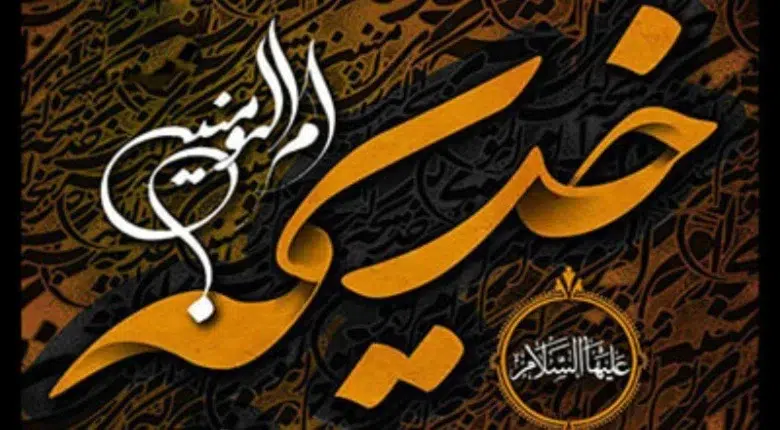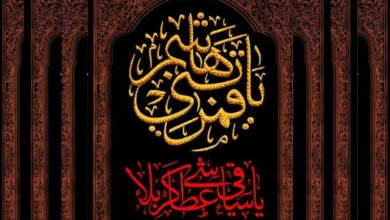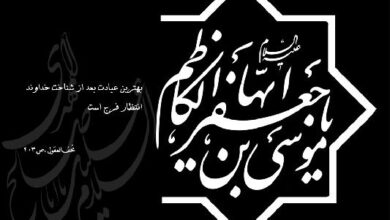Hazrat Khadija (as)Umm Al Momineen

In this article, you’ll know about the life of Syeda Hazrat Khadija as her early life, and how she helped Islam to stand on his feet with the Holy Prophet (pbuh).
Overview of Syeda Hazrat Khadija Al kubra (as) personality
Syeda Hazrat Khadija bt. Khuwaylid (a.s), also called Khadija al-Kubr (a.s) and Umm al-Mu’minn (the Mother of Believers), was the first wife of the Holy Prophet Muhammad (pbuh) and the mother of The lady Fatima (a.s). She married the Holy Prophet Muhammad (pbuh) 15 years before Bi’tha (595 CE) and was the first woman to dedicate herself to Islam.
Bibi Khadija (a.s) gave all of her money to help Islam grow. When he married Hazrat Khadija (a), the Holy Prophet Muhammad (pbuh) refused to select another wife. Bibi Hazrat Khadija (a.s) was always praised by the ProphetProphet (pbuh), both while she was alive and after she died.
Family and ancestors of Syeda Hazrat Khadija Al Kubra’s (as)
Khuwaylid b. Asad b. Abd al-Uzza b. Qusayy was her father, and Fatima bt. Za’ida was her mother. It is said that she was born in Mecca fifteen years before ‘Am al-Fil.
Before Islam
We didn’t know much about Syeda Hazrat Khadija (a.s) before she became a Muslim. Sources say that she was a wealthy merchant who operated in a mudaraba. She hired workers to do the work for her and got some of the business’s money.
Syeda Hazrat Khadija (a.s) was well-known because her ancestors were noble. Scholars said, “She was a wise and honorable woman, and God blessed her.” She came from a high-class family but was extraordinarily wealthy and kind.
Bibi Hazrat Khadija as was born in 565 A.D. and died in 623 A.D., one year before the Hijrat, when the Holy Prophet and his followers moved from Mecca to Medina. However, some scholars say she lived until she was 65. Bibi Hazrat Khadija ‘s a.s mother was Fatima,
The daughter of Za’ida ibn al-Asam of Banu ‘Amir ibn Luayy ibn Ghalib. She died around 575 A.D. and was a distant cousin of the Prophet Prophet Muhammad (pbuh). Bibi Hazrat Khadija ‘s a.s father, who died near 585 A.D., was from the Abd al-‘Uzza clan of the Quraysh tribe. Like numerous other Qurayshs, he was a successful businessman and merchant. Hazrat Khadija as inherited his vast wealth and business skills, and she was able to do well with the family’s wealth.
People say that when all of Quraysh’s traders got together to start their long, challenging trip to Syria in the height of summer or to Yemen in the winter, Hazrat Khadija’s as caravan was as big as all the others.
Even though Hazrat Khadija as was born into a very racist society, she was given two titles: Ameerat-Al-Quraysh, which means “Princess of Quraysh,” and al-Tahira, which means “the Pure One.” She got these titles because she was a good person and came from a good family. She used to provide food and clothing for people experiencing poverty, help her relatives with money, and even pay for her cousins’ weddings, who wouldn’t have been able to get married otherwise.
Bibi Hazrat Khadija a.s had yet to find someone to care for her by the year 585. Even so, she didn’t want to get married; she was well-known for her business dealings, and people wanted to marry her.
Sunni scholars say that she was married before her Nikah to Holy Prophet (pbuh), But that’s not true according to the Quran’s perspective. Shi’a scholars believed that Bibi Hazrat Khadija (a.s) only wed people after Prophet Muhammad (pbuh) after many studies.
They also have, given the intellectual and cultural circumstances in Hijaz and Bibi Hazrat Khadija al-Kubra’s (a.s) high place and status, and it is improbable that she would marry a man from one of the two low tribes, Banu Tamim or Banu Makhzum as stated by Sunni scholars. Researchers say that the children who were thought to be Bibi Hazrat Khadija ‘s a.s were the children of Bibi Hazrat Khadija ‘s a.s sister Hala. After Hala’s husband died, she became responsible for her and her children. Bibi Hazrat Khadija a.s) cared for Hala’s children even after she died.
How did the Holy Prophet Muhammad (pbuh) get married?
Bibi Hazrat Khadija (a.s) handed Holy Prophet Muhammad (pbuh) her wealth when she learned about his honesty, trustworthiness, and good morals from Hazrat Abu Talib a.s. Following that, when Prophet Muhammad (pbuh) came back from a business trip to Syria, Bibi Hazrat Khadija ‘s a.s slave Maysara told Syeda Hazrat Khadija (a.s) what Holy Prophet Muhammad (pbuh) was like. After that, she proposed to Holy Prophet Muhammad’s (pbuh) Gardian Hazrat abu Talib a.s to marry His Holy Nephew Prophet (Muhammad) pbuh with Her.
All accounts agree that Syeda Hazrat Khadija (a.s) was Prophet Muhammad’s (pbuh) first wife.
The Prophet (PBUH) never had another wife while they were married. It also stated that the ProphetProphet (pbuh) married Syeda Khadija (a.s) when he was 25. Scholars said that Syeda’s (a.s) different ages are written in history when she got married: 21, 25, 28, 30, 37,
Historians had said Syeda Hazrat Khadija (a.s) was anywhere from 25 to 36 years old when she wedded Prophet Muhammad (pbuh).
Some experts agree that Syeda Khadija (a.s) married the ProphetProphet (s) when she was 25. This is based on the fact that she died at age 50. Since this is not a usual statement, it seems hard to agree. But according to the story of 65, if we assume that al-Qasim, Syeda Khadija’s (a.s) son and the Prophet’sProphet’s (pbuh)son, died after Bi’tha, Syeda Khadija (a.s) would have been near 55 when al-Qasim came into the world, which is not acceptable and impossible.
Also, if we consider Syeda Khadija (a.s)’s position and standing in Quraysh, it seems unlikely that she would get married when she was 40. This means she couldn’t have been older than 25 or 28 when she wedded Holy Prophet Muhammad (pbuh).
Embracing Islam
Most historical accounts say that Syeda Khadija (a.s) was the first person to become a Muslim. Even some sources said that all experts agree that Ali B. Abi Talib (a.s) was the first person to turn to Islam Khadija (a.s).Khadija al-Kubra (a.s) and Ali b. According to sources about when Sahaba did so, Abi Talib (a.s) was the first to turn to Islam. They said they were the first to pray with Prophet Muhammad (pbuh).
Syeda Khadija’s a.s sacrifices form Islam.
After Syeda Khadija al-Kubra (a.s) gave him all his assets, the ProphetProphet Muhammad (s) was better off financially. As Allah talked about his gift to the Prophet Prophet Muhammad (pbuh), he said, “Allah saw that you were in need and made you rich.” Prophet Muhammad (pbuh) also always said, “No money was as valuable to me as Khadija’s (a.s) wealth.”Prophet Muhammad (pbuh) used her money to pay off the expenses of Islam, help orphans, and help poor people.
When Mecca cut off trade with Banu Hashim, Syeda Khadija al-Kubra’s (a.s) wealth helped Banu Hashim. “Hazrat Abu Talib a.s and Syeda Khadija (a.s) gave all their money to protect Islam and help the Muslims who were being discriminated against. Hakim b. Hizam, Syeda Khadija’s a.s cousin, brought dates, fruit, and wheat for Banu Hashim when things were complex and dangerous. Allah Almighty was very pleased with Syeda Khadija’s (a.s) devotion and kindness, and he saw them as gifts to the ProphetProphet Muhammad (pbuh).
Holy Prophet always talked about how hard she worked and how much he valued her kindness. As Islam’s enemies put more and more pressure on it, Syeda Khadijah (a.s) gave up her comforts, wealth, and home for Islam. Now it looks like she even gave up her life for Islam. Without question, she could have lived for many more years if she had stayed in her massive house in Makkah, surrounded by her maids. But she chose to stick with her husband and his family through life’s hard times.
During that time, she had to deal with hunger, thirst, and high heat in the summer and cold in the winter, but she never told her husband about any of these things. She was always happy, no matter how good or bad things were or how much or how little she had. Austerity and lack of things never made her unhappy. During her husband’s life’s darkest and most challenging times, her personality always gave him comfort, courage, and strength.
Seyda Khadijah (sa) spent all of her money to buy food and water for her husband’s clan throughout the years of the siege. When she returned to her house, she had no money left. When she passed away, she wished to cover Herself in his husband’s robe (abaya). Prophet’s (pbuh) Abaa was used as her shroud, and she was buried in it.
Syeda Khadijah (a.s) has more “firsts” to her name than anyone else in the history of early Islam. She was the first servant of Allah’s Prophet and his first wife. She was the first woman to follow Allah’s messenger. She was the first person to say that there was only one Creator and that Holy Prophet Muhammad (saw) was His Messenger. She will always have the glory and honour of being the first woman in the whole world to believe.
She was the first person besides her husband to hear the prophetic word of Revelation. She was the first person whose husband prayed with her to Allah (SWT). She was always with the Prophet Prophet Muhammad (saw) when he entered the presence of Allah (SWT). She was the first person to be called “Mother of Believers.” She was Muhammad Mustafa’s only wife who didn’t have to live with another woman. All the love, care, and friendship that her husband gave her,
When the Holy Prophet (pbuh) talked about Khadija (a.s),
Allah didn’t give me anything better than her. She believed me when other people didn’t. She shares her assets with me when other people don’t. And Allah gave me children from her, but not from anyone else.
Syeda Khadija (a.s) was a well-known, trustworthy, and wealthy woman in her time.
Jabir b. ‘Abd Allah al-Ansari said that Prophet Holy Muhammad (pbuh) said that Syeda Khadija (a.s), Syeda Fatima (a.s), bibi Maryam, and Asiya were the best women in the history of humanity.
Holy Prophet (pbuh) also said she was one of the most beautiful women in the world and one of the greatest. She was called al-Tahira, which means “the pure woman,” al-Zakiyya, which means “the innocent woman,” al-Marziyya, which means “the respected woman,” al-Sidiqqa, which means “the truthful woman,” and the best woman of Quraysh, according to the sources. Umm al-Zahra, and Umm al-Mu’mineen were her kunyats.
Sources say Syeda Khadija (a.s) was ProphetProphet Muhammad’s (pbuh) best and most honest friend and advisor. Prophet Muhammad (pbuh) thought Khadija al-Kubra (a.s) was very important. There have been many stories about how important Syeda Khadija (a.s) was in the life of the Prophet Prophet. Even after she died, the ProphetProphet (s) always considered her the most important person.
Syeda Khadija (a.s) was a wise and honourable woman who knew a lot. Scholars said Syeda Khadija (a.s) was renowned for her wisdom, equality, development, and search for faith and perfection. Since she was young, Arabs in Hijaz knew her as a good and honest woman.
Her spiritual prosperity was more important than her fabulous wealth because it was limitless. Even though many famous and rich Quraysh men asked Syeda Khadija (a.s) to marry them, she turned them down. She picked Muhammad (pbuh) because she wanted to be saved in the next life and get rewards in paradise.
Way to heavens
Most accounts say Syeda Khadija al-Kubra (a.s) died ten years after Bi’that, in the year 4 B.H./619. They said she was 65 when she died, but according to some narrations, she was 50 when she passed away.
Some sources say Syeda Khadija (a.s) died the same year Hazrat Abu Talib a.s did, after Abu Talib. Scholars say Syeda Khadija (a.s) died 35 days after Hazrat Abu Talib a.s. Other records said that Syeda Khadija (a.s) died ten years after Bi’tha, in May 619, during Ramadan. This year was called Am al-Huzn (the year of sadness and grief) because of the deaths of the Prophet’sProphet’s uncle Hazrat Abu Talib (a.s) and his wife Syeda Khadija (a.s).
Islamic stories say that Prophet Muhammad (s) covered her first with his cloak and then with a second robe from paradise. Then he buried her in al-Ma’lat Cemetery on Mount Al-Hajun’s top.




